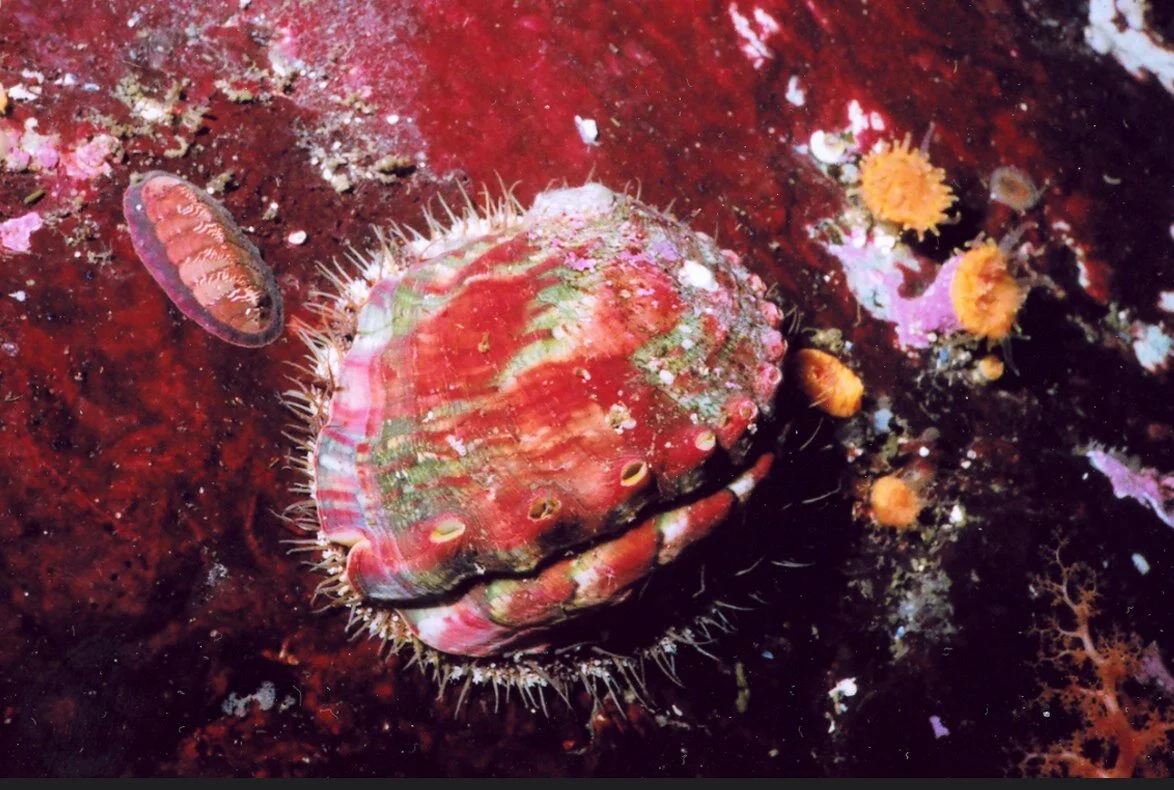The Washington Department of Fish and Wildlife (WDFW) is seeking public comment on a draft recovery plan for pinto abalone, a large species of sea snail that was listed as endangered in Washington in 2019. WDFW prepares recovery plans to guide conservation and recovery efforts of protected species in the state.
Field Photos: On the Water with the Pinto Abalone Team
Like we covered in a post this summer, saving endangered Pinto abalone is hard in part because locating their habitat is time consuming and, as a result, expensive. It requires boats and dive crews in search of suitable locations, but a recent SeaDoc-funded project is looking for something more efficient.
Photojournalist Gemina Garland-Lewis has been following Dr. James Dimond of Western Washington University and his team this summer as they’ve explored a new method: bottling up water and testing it for the presence of abalone DNA to determine habitat. That would simplify things greatly!
Photos from the Field: Outplanting Endangered Pinto Abalone
Book Review: The Iconic Abalone’s Remarkable History and Uncertain Future
How were Vancouver Island’s Nuu-chah-nulth people, California red abalone, Chinese quicksilver, and 18th century Spanish Treasure Fleets connected to each other? In two enlightening pages, author Ann Vileisis weaves a fascinating story of world trade for bright shiny objects, plush furs, and technology that illuminate a web of dependency among the Salish Sea, China, California, Mexico, and Spain all tied to a big marine snail with a miraculous shell—abalone. It’s an engaging introduction.
Saving the Pinto Abalone, One Bottle of Sea Water at a Time
Pinto abalone populations in the Salish Sea have been decimated after years of poaching and over-harvest, falling by 98 percent in recent decades. There are not enough remaining in the wild for them to reproduce naturally because they are “broadcast spawners,” meaning if one releases sperm, a female needs to release her eggs close enough to be fertilized.
When abalone are not close enough to other reproductively active abalone there can be no reproduction, making them functionally extinct in the wild.
Ocean Outbreak: Confronting the Rising Tide of Marine Disease (Book Review)
Ask any ocean lover to name the biggest threats to ocean conservation and you’ll get a list so long it will make you uncomfortable: derelict fishing gear, increasing underwater noise, invasive species, ocean acidification, overharvest, plastics, toxins, warming water, and so on.
What you probably won’t hear is the word disease—not because the agents of disease are microscopic and out of sight, but because we know so little about how they affect the marine environment. Most people have never thought of parasites and pathogens as agents of change or important ocean stressors.





